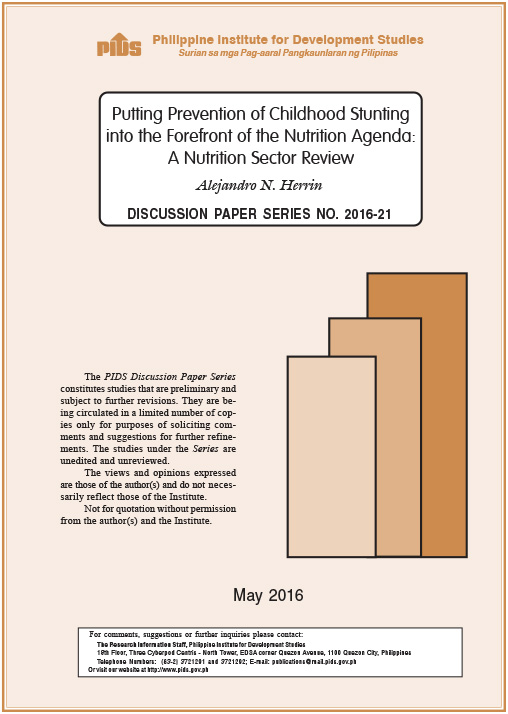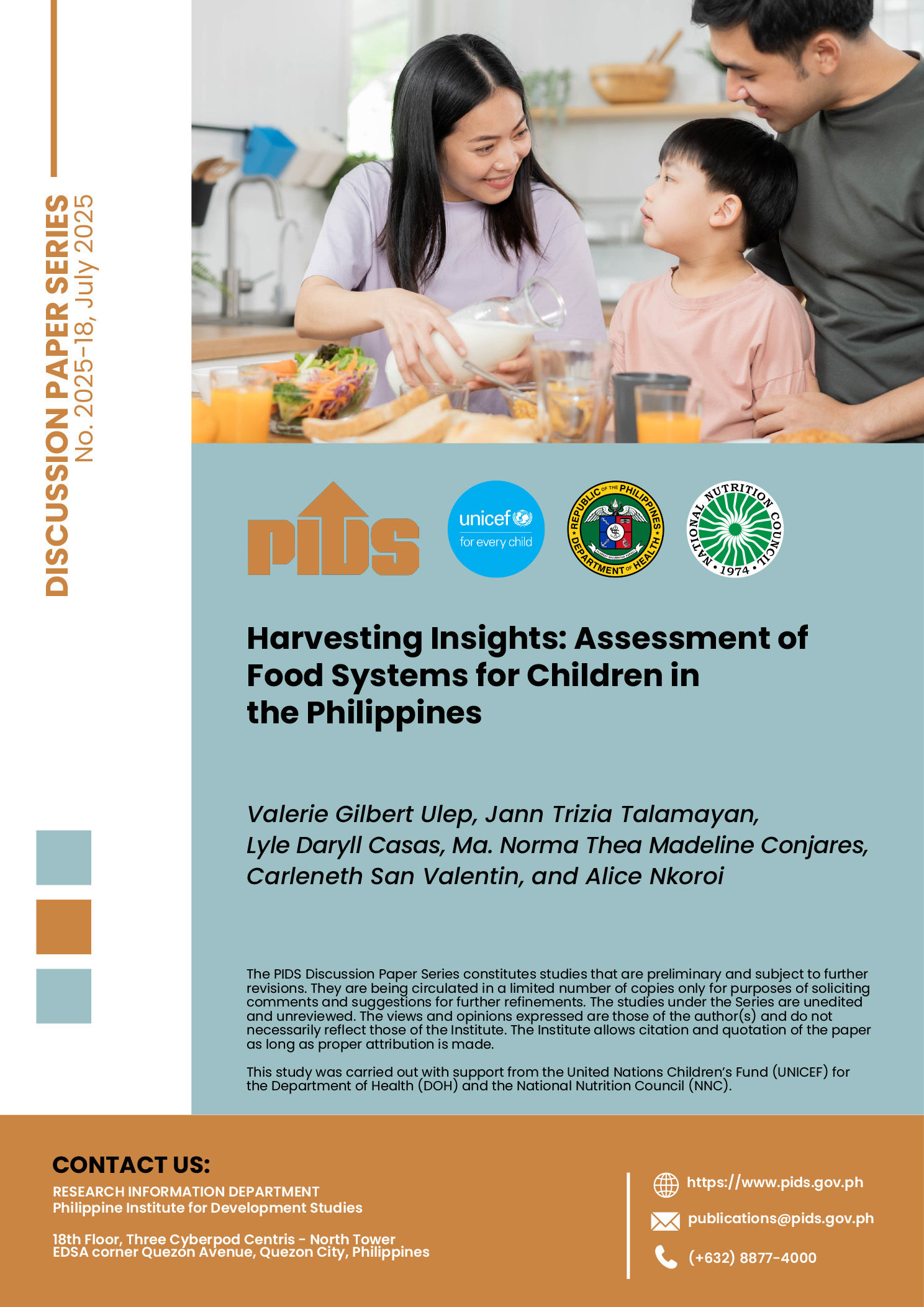In 2015, based on the latest survey of the Food Nutrition Research Institute, childhood stunting affected one-third (33%) of children under five years. This is equivalent to 3.78 million children in 2015. Moreover, there has been little progress in reducing stunting prevalence in the last 20 years. The strategic importance of stunting prevention cannot be overemphasized in view of its short- and long-term consequences on health, learning, and economic productivity, and the short period of time that it can be effectively prevented (the first 1000 days from conception to age 2 years). Moreover, cost-effective interventions to address the situation are known and regularly updated.
Assessments of specific nutrition projects have uncovered various implementation issues of targeting, coordination, management structures, logistics, and sustainability. On the other hand, recent sector-level assessment has uncovered a number of structural issues of governance--local mobilization to implement nutrition program; limited resources for nutrition; and organizational--effective coordination by the National Nutrition Council National Secretariat in a devolved set-up. Responding to these structural issues requires a new approach to address them. An approach suggested in the paper is to take advantage of existing opportunities offered, first, by the increasing global interest in child stunting, and second, by the existing platforms for identifying the poor and for delivering and financing health services. The paper outlines an approach for consideration and discussion.
Citations
This publication has been cited 1 time
- Herrin, Alejandro. 2017. Preventing chilhood stunting: Why and how?. Working Papers id:12069. eSocialSciences.













